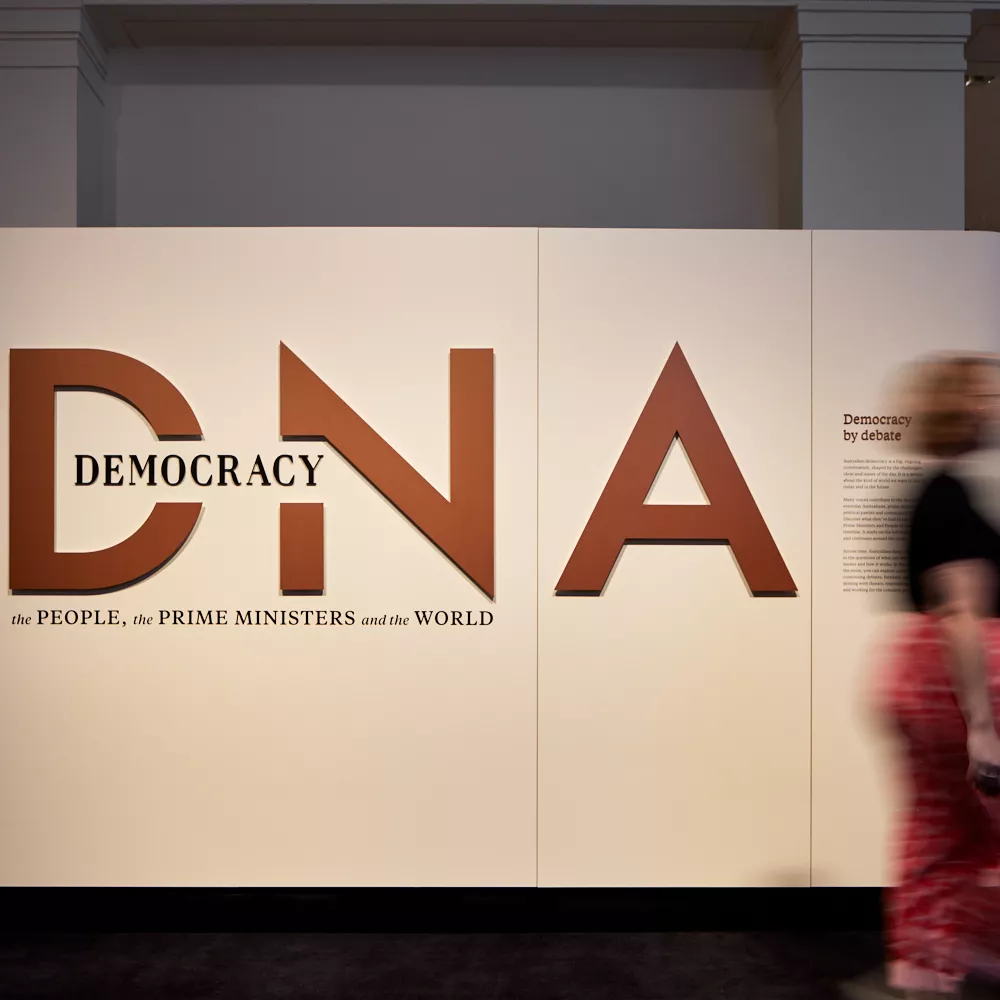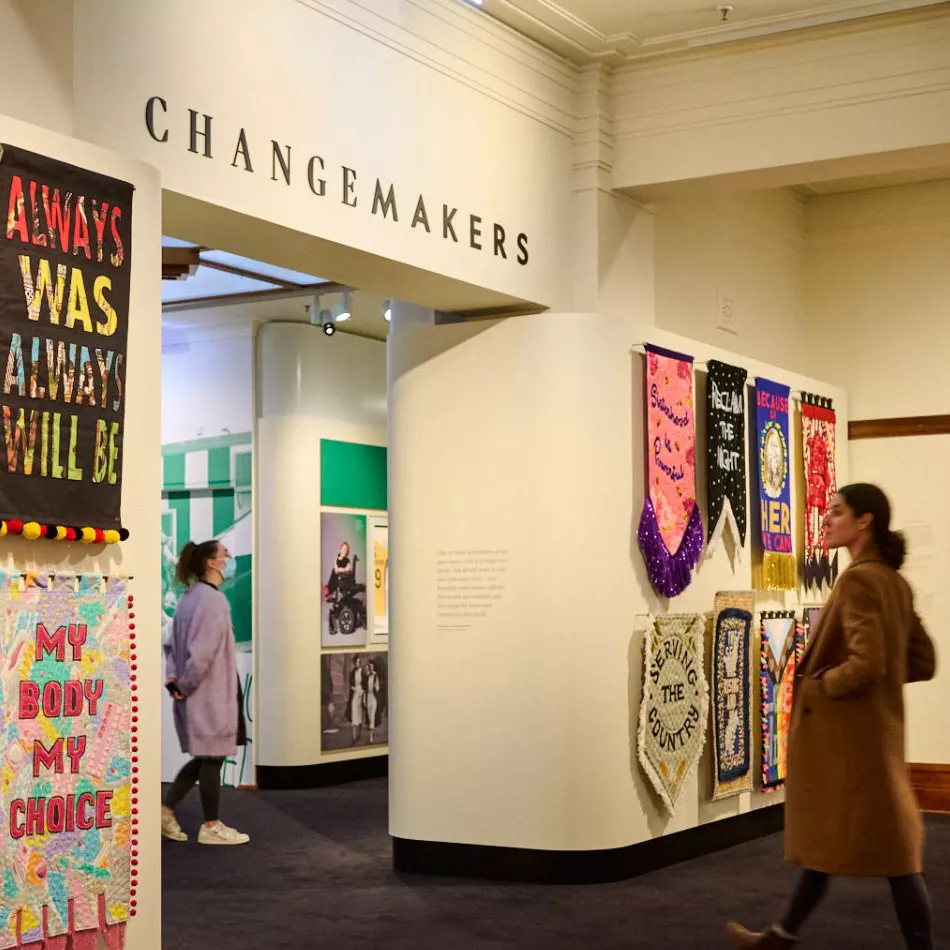Clip-on earrings, floral arrangements and heritage furniture
- DateSat, 10 Sep 2022
How does the museum recreate life in a 1980s working parliament?
Interpreting Old Parliament House to our visitors can be done in many ways, however we've found that one of the most immersive and enjoyable are our 'interpreted rooms’. These are spaces that have been recreated to look as they did when they were part of the functioning Parliament House. By evoking different eras, we allow our visitors to step back in time.
'We've found visitors are really drawn to, and engaged by, a re-creation of the work place,' says Kate Armstrong, our Manager of Interpretation and Content Development. Our Interpretation team goes through a fascinating and meticulous process to create these rooms, from scouring old photographs to interviewing former staff members in order to gather a detailed description of the furniture, décor, and overall feel of these spaces at that specific moment in time.
'The process is science, history and art, it draws from all those areas,' says Kate, adding that it can take around a year from the time of deciding on an era to opening the space to visitors. 'There’s historical research and content knowledge; the science of how things are made and how they'll stand up to light; and the artistic and design side, which is about imagination, translating photographs, and being able to envisage how it might look.' The finished displays are normally set up for at least 10 years, which Kate says makes all the effort worthwhile.
Our display in the Speaker’s Suite focuses on a single individual during a particular period. The previous interpretation, in place from 2007 to 2021, was based on the mid-1970s to mid-1980s to represent the era when the suite was occupied by Sir Billy Snedden. We have refreshed this space to take visitors back to the period from 1986 to 1988 when it was occupied by the first female Speaker of the House of Representatives, Joan Child. It was here that Child played an important role in the functioning of parliament, presiding over debates and ensuring the standing orders were followed.
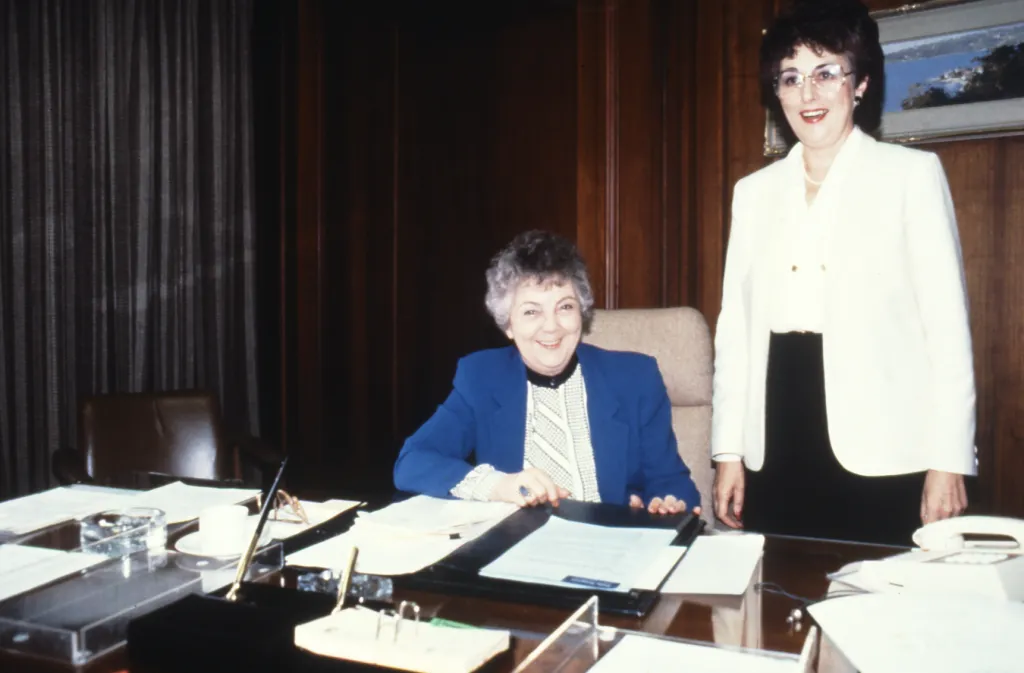
Speaker Joan Child and Marie Donnelly in the Speaker’s Office, 1988. Marie was responsible for bookings for the Speaker’s and Visitors’ Galleries in the House of Representatives Chamber. Credit: Photograph by Robert McFarlane, Department of the House of Representatives, Museum of Australian Democracy Collection
The Speaker’s Suite includes a foyer, staff and Speaker’s office, bathroom and dressing area, sitting room, kitchenette, and dining room. Each area brings to life a specific moment in time – the staff office takes visitors back to 14 April 1988 at 9:30am, a sitting day in the House of Representatives Chamber, replicating a busy, crowded workplace just 30 minutes before parliament sits. The adjacent dining room recreates a dinner party at 7:10pm, featuring the original table at which Child hosted silver service dinners for parliamentary delegations and VIPs.
To recreate the Speaker's Suite, Kate began by carefully examining the rooms and imagining how they would have felt, as well as the sounds and smells. 'For me, it starts with mentally clearing the space, stripping back the previous display and taking it back to basics.' Next, two important ingredients are needed – photographs from the era being interpreted, and people to speak to who were associated with the space at that time. 'I'm looking for both what the camera captures and also what people's memories are – to find corroboration across stories if I can.'
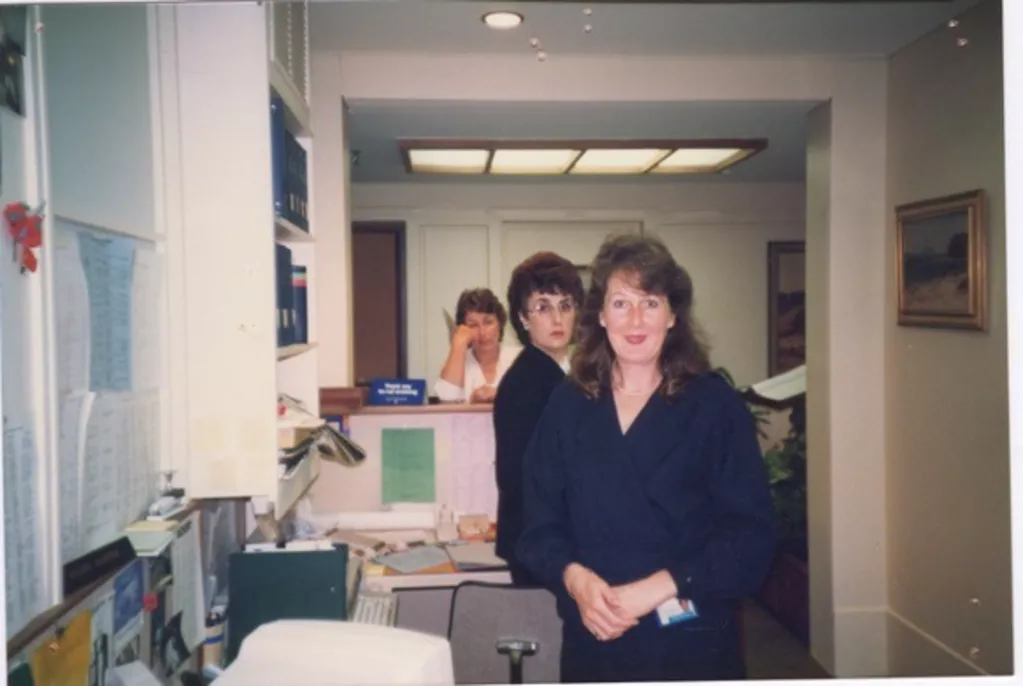
Staff members Bertha Williamson, Marie Donnelly and Wendy Barnes in the staff office in the Speaker’s Suite, c1988. Interviews with former staff are a critical ingredient in developing authentic room re-creations. Credit: Museum of Australian Democracy Collection
Kate will then visit the museum's extensive furniture collection and either use the original furniture in the new display, which is the best outcome, or otherwise finding the next best option. 'People might think of room re-creation as buying a lot of old stuff and putting it in a space, but it’s not that simple,' says Kate. 'There’s a very fine line between using materials that are in good condition and look fresh, like they would have in 1986, and looking like a dusty old op shop.' As well as collecting dust, the objects are prone to being touched or rearranged, requiring regular cleaning and maintenance. 'The rooms are not sealed like a showcase display in a typical exhibition,' Kate says.
After ticking off the carpet, lighting, walls and furniture, the stage is set. 'The details come from knowing what people used on an everyday basis in those spaces,' says Kate, who carefully considers everything from changes in technology to the nature of how stationery looked. 'It is extraordinary how visitors’ memories are unearthed and evoked by the re-creations. Our older visitors see objects they would have used themselves in a typical office 30 or 40 years ago, and they respond to them almost viscerally,' says Kate. 'It’s really lovely to witness.'
When it comes to sourcing props, there are some items the team imagines will be hard to find and others that they expect to be straightforward, but it's often quite the reverse. One such instance in the Speaker's Suite was a 1987 Paramatta Eels poster, which could be seen on a pinboard in a photograph of the staff offices. 'I thought it was going to be mission impossible,' says Kate. 'Then I went on eBay and within about five minutes I'd bought one in immaculate condition. That says what I know about football memorabilia!' Personal items such as jackets and handbags are used to denote gender, the fashion of the day, the era, and who sat where – Kate even placed one clip-on 1980s earring next to a staffer's desk phone to imply she was taking a call.
Jessica Cram, our Interpretation and Content Development Officer, managed the recreation of the hospitality areas in the Speaker's Suite including the kitchenette and dining rooms. As the first large interpretation space she'd worked on, Jess says she was amazed at how much attention to detail is involved. 'You need to be a bit of a detective – sifting through hundreds of photos, listening to oral histories, and interviewing past employees to get the most accurate depiction of what the rooms looked like.'
The alcohol in the decanters in the kitchenette is real (it preserves well), while the 'used' glasses on the sink have lipstick on the rims and red and brown Texta in the bowls to suggest the dregs of pre-dinner drinks, says Jess. When it came to food, perishables could not be used in the museum, so Jess found a website, Artificially Real, that creates artificial food for window displays. 'We have one menu from the Speaker's Suite which states there was lemon meringue pie served for dessert, and this shop just happened to have an artificial lemon meringue pie,' she says.
Another opportune find came from Gumtree. 'We had the original receipt from 1977 of the Arzberg 'Larissa' dinner set that was bought for the suite,' says Jess. 'I just happened to be online at the right time and there was a couple in Perth who were selling the exact set, so we were able to have it sent over – with no breakages at all!' Adding to the ambiance, a soundscape of conversation and clinking cutlery plays softly over concealed speakers. 'It was a fine balance between being audible so that you know there's a dinner party happening, but quiet enough that visitors can still read the interpretive panels if they desire,' says Jess.
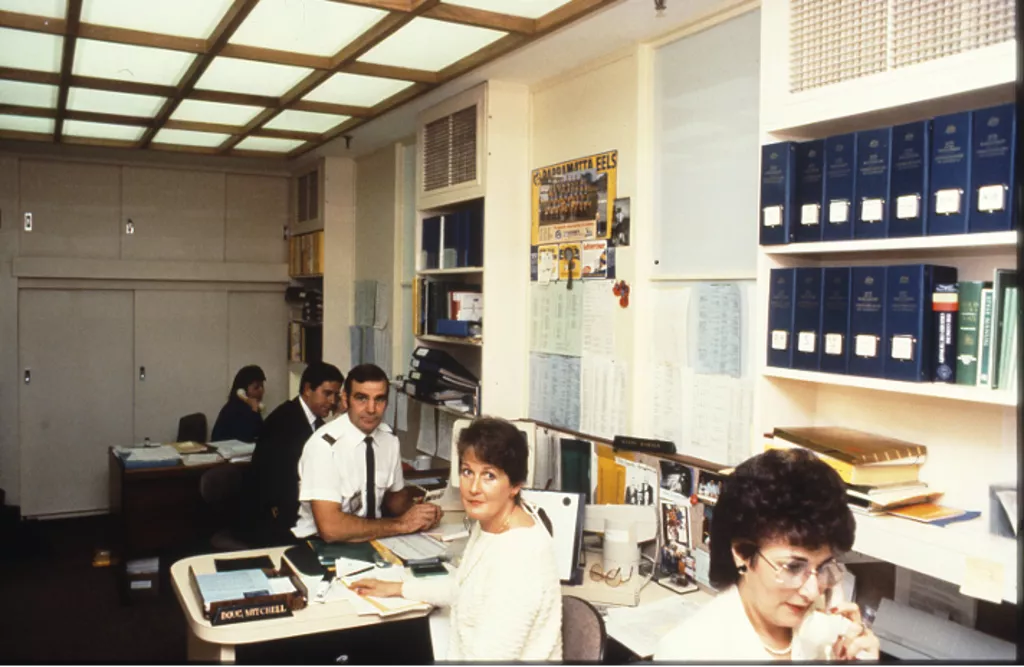
Members of the Speaker’s staff - Koula Alexiadis, John Porter, Doug Mitchell, Wendy Barnes and Marie Donnelly - hard at work in the suite in 1988. Credit: Photograph by Robert McFarlane, Department of the House of Representatives, Museum of Australian Democracy Collection
As well as a penchant for entertaining, Speaker Joan Child loved flowers and greenery, and her personal taste is reflected in the indoor plants, landscape paintings and floral arrangements displayed throughout the suite. Not to overlook any detail, Jess learnt how to mix and pour resin so that it looks like there is water in the vases. 'The aim is to make a space look authentic, that it hasn’t been created, which can be hard,' she says. 'These little touches really do make all the difference.'


